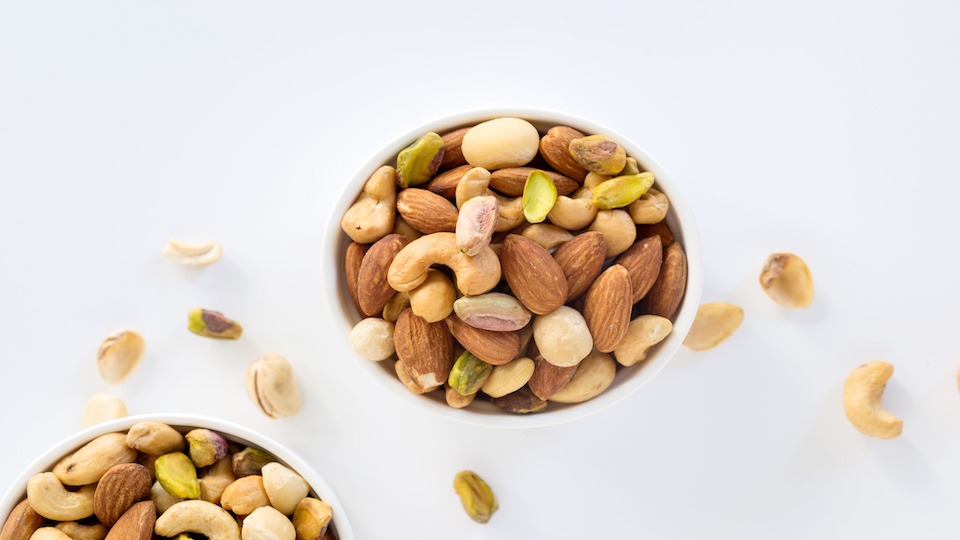I learned a new word recently that is sure to spark some interesting conversation at your next cocktail party. The word is coprolite…and if you think it sounds high tech, you’re wrong. Coprolites are fossilized feces. In other words, paleo poop! It turns out that research on human coprolites has taught us some interesting things about ancestral diets. The most compelling thing gleaned from this research is that our earliest relatives ate a ton of fiber-rich foods. In fact, it is estimated that they ate as much as 100 grams of fiber daily. That’s a far cry from the mere 17 grams that most Americans get today.
This article will teach you more about why fiber matters and give you eight easy ways to boost the levels of fiber in your diet.
Enjoy,
-JL
8 Ways to Add Fiber to Your Diet
You have probably heard it said that fiber is an integral part of a healthy diet which is very true. Fiber is a non-digestible carbohydrate found in foods. It is not only essential for proper digestion but also carries with it a number of other health benefits including:
Adding bulk to foods: Because fiber adds bulk to foods, it can help you feel full and satisfied. This can keep you from overeating and help with weight loss.
Helps create a healthy gut microbiome: Having enough healthy gut bacteria is essential to wellness. Fiber helps promote friendly gut bacteria in the lower end of the digestive tract which also aids in healthy and balanced digestion.
Can lower cholesterol: Some fibers help absorb bile salts while pushing your body to use cholesterol to make more bile.
Can regulate bowels: Regular elimination is critical for good health. Fiber absorbs water and adds bulk to stools which helps maintain regularity.
Can help manage blood sugar: Some fibers slow the absorption of sugar from food which can help balance blood sugar.
Despite its importance, many adults don’t get nearly enough fiber. On average, adults only get 17 grams of fiber a day which is much lower than the recommended 21- 25 grams for females and 30 – 38 grams for males.
How to get more fiber
Getting more fiber in your diet is not difficult. Here are some great ways to increase your fiber consumption without making radical changes to your diet or lifestyle.
Consume high fiber fruit – All fruit contains fiber, some more than others. Berries and apples are excellent high fiber fruits to consume daily.
Eat whole grains not refined grains – Refined grains are stripped of their vitamins and fiber making them rather empty as far as nutritional value goes. Choose whole grains instead that have both vitamins and fiber intact. Oatmeal is a good option but here are a few more to consider:
- Wheat berries
- Millet
- Amaranth
- Quinoa
- Buckwheat
- Barley
- Bulgar wheat
Eat chia seeds – Chia seeds may be little, but they are powerful. These tiny seeds become gel-like in water and are 96% insoluble fiber. They also contain omega-3 fatty acids, protein, vitamins, and minerals. Top salads, smoothies, and soups with chia seeds for a delicious taste and fiber boost.
Eat avocados – Avocados are incredibly nutritious and contain not only healthy fat but also a rich supply of fiber. Half on an avocado has five grams of fiber. Avocados have been linked to improved heart health, reduced risk of metabolic syndrome and overall healthier diet and nutrient uptake. Use avocados instead of butter or mixed with butter and in salads and soups.
Eat more nuts and seeds – Along with chia seeds, eating plenty of other seeds like pumpkin flax and hemp as well as nuts like almonds and walnuts. Seeds and nuts provide fiber along with healthy protein and fat. Snack on nuts and seeds or toss them in salads, stews or soups.
Leave the peel/skin on apples, cucumbers, and sweet potatoes – You may not know this, but when you peel fruit and veggies you remove half of the fiber. Just be sure that you wash the peel well before eating it.
Eat lots of legumes – Legumes, which are rich in fiber as well, include beans, dried peas, and lentils. In addition to fiber, legumes contain protein, carbohydrates, vitamins, and minerals. One cup of cooked beans provides 75% of daily fiber needs. If you are a meat eater, try replacing one or two meat meals with legume-based meals. This has been linked to an increased lifespan possibly because of the positive impact they have on gut flora. Beans are a very versatile food that can be used in salads, soups, stews, and even desserts.
Include a high fiber food in every meal – Spread out your fiber consumption evenly throughout the day. Focus on high fiber food with each meal such as oatmeal, berries, and seeds for breakfast, raw veggies, fruit and nut butter for a snack, salad for lunch and beans and veggies for dinner.
-The UpWellness Team









